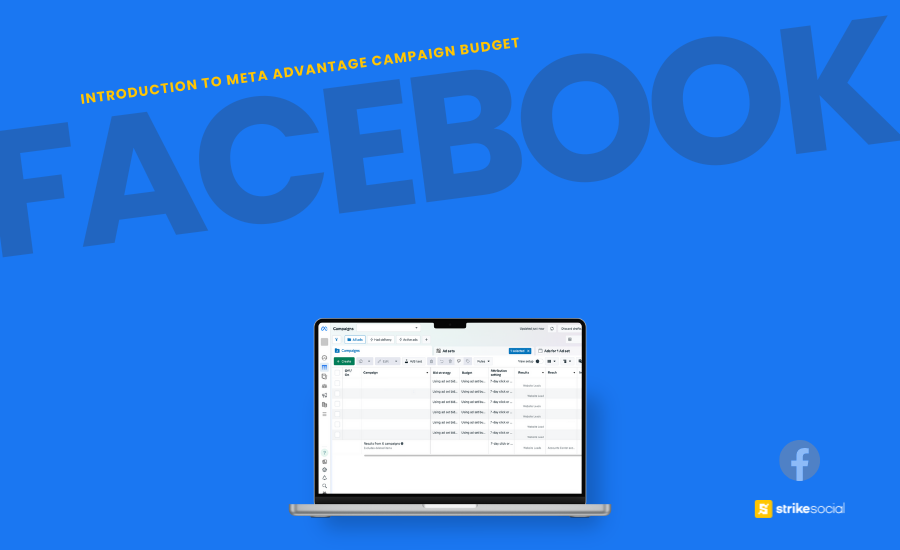Strike Overview
- Launched in 2017, Facebook Campaign Budget Optimization (CBO)—now known as Meta Advantage Campaign Budget—was designed to reduce the manual effort of managing ad costs by leveraging Meta’s AI for budget allocation.
- If your Facebook ads aren’t delivering the expected results, this tool can help optimize spending. But how can you maximize its benefits while maintaining control over your advertising budget?
- Learn how to strike the right balance between cost efficiency and performance by properly utilizing Meta Advantage Campaign Budget (Facebook CBO).
Jump to Section
This post was updated in February 2025 to provide you with the latest information.
Optimize Your Facebook Ad Spend with Meta Advantage Campaign Budget (CBO)
Beyond your Facebook advertising metrics — the traffic to your website, the leads generated — another critical aspect to monitor closely is your Facebook ad spend. The challenge lies in allocating your campaign budget not just evenly across your ad groups and their respective ads, but more importantly, towards those showing superior performance. Traditionally, this has been a manual task for media buyers, requiring constant oversight.
The introduction of Meta Advantage campaign budget (formerly campaign budget optimization) feature aims to alleviate this task from the shoulders of advertisers and media buyers. This brings us to a crucial inquiry: Can we trust Meta’s AI to manage our budgets effectively? More importantly, how can media buyers maintain a level of involvement and control in this automated process?
Common Mistakes When Managing Facebook Campaign Budgets
Media buyers are responsible for overseeing ad costs to ensure that the ad spend is effectively channeled towards the most successful ad groups and ads. This strategy also prevents poorly performing ones from consuming the entire budget for Facebook ads.
Given that media buyers cannot monitor campaign budgets and ad spend 24/7, certain errors commonly occur when budgets are not adequately supervised:
Setting fixed budgets across all ad sets regardless of performance
- Initially allocating ad budgets evenly across all ad sets is a reasonable strategy at the start of your Facebook campaigns.
- However, once the campaigns begin to show results in terms of conversions or website traffic — typically around the two-week mark or the Learning phase — it becomes essential to redistribute the budgets for Facebook ads towards the better-performing ones.
Lack of data analysis for budget reallocations
- An important consideration in setting up a Facebook campaign is deciding which key metric to focus on, depending on your campaign’s goal. For objectives related to website reach and awareness, the CPM (cost-per-thousand impressions) should be your primary metric.
- Budget adjustments made without considering the appropriate metrics, such as focusing on CPC (cost per click) instead, may not support the campaign’s objectives effectively.
Disregarding pacing and optimization features
- Advertising platforms, including Facebook, offer various features that allow for a more transparent view of how your budget is being spent. Facebook Ads Manager provides recommendations and alerts to help you enhance your budget and ad performance.
- These notifications should not be ignored; they are valuable resources that, when utilized effectively, can significantly improve the efficiency of your ad spend.
Further Reading
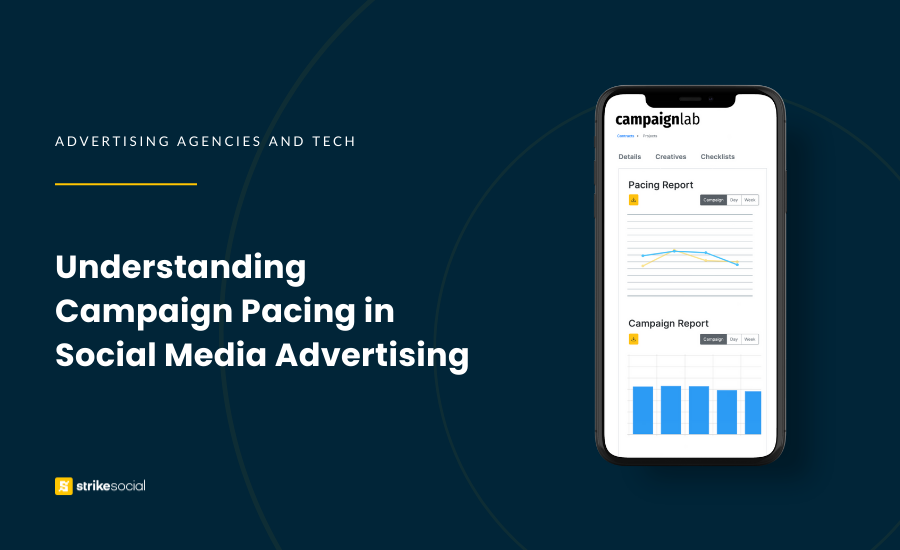
Effective Campaign Pacing in Paid Social Advertising
A well-paced paid social campaign ensures steady results, whether for short-term promotions or long-term growth. By managing campaign pacing effectively, you can maximize performance during peak periods while keeping costs under control.
How Meta Advantage Campaign Budget Works
With Meta Advantage Campaign Budget (Facebook campaign budget optimization), advertisers have the ability to establish a single, unified campaign budget. This budget is then dynamically allocated across various ad sets to prioritize those showing the best performance, all in real-time.
Through Meta’s advanced AI technology, the system continuously evaluates the performance of each ad set. It then dynamically redistributes the campaign budget, prioritizing ad sets that are delivering the best results. This process happens automatically, relieving media buyers from the task of manually adjusting Facebook ad budget allocations across different ad sets.
By ensuring that a larger portion of your budget is spent on ad sets that are performing well, Facebook CBO maximizes the ROI of your advertising efforts. This automated optimization process allows businesses to achieve better campaign outcomes, requiring minimal manual intervention.
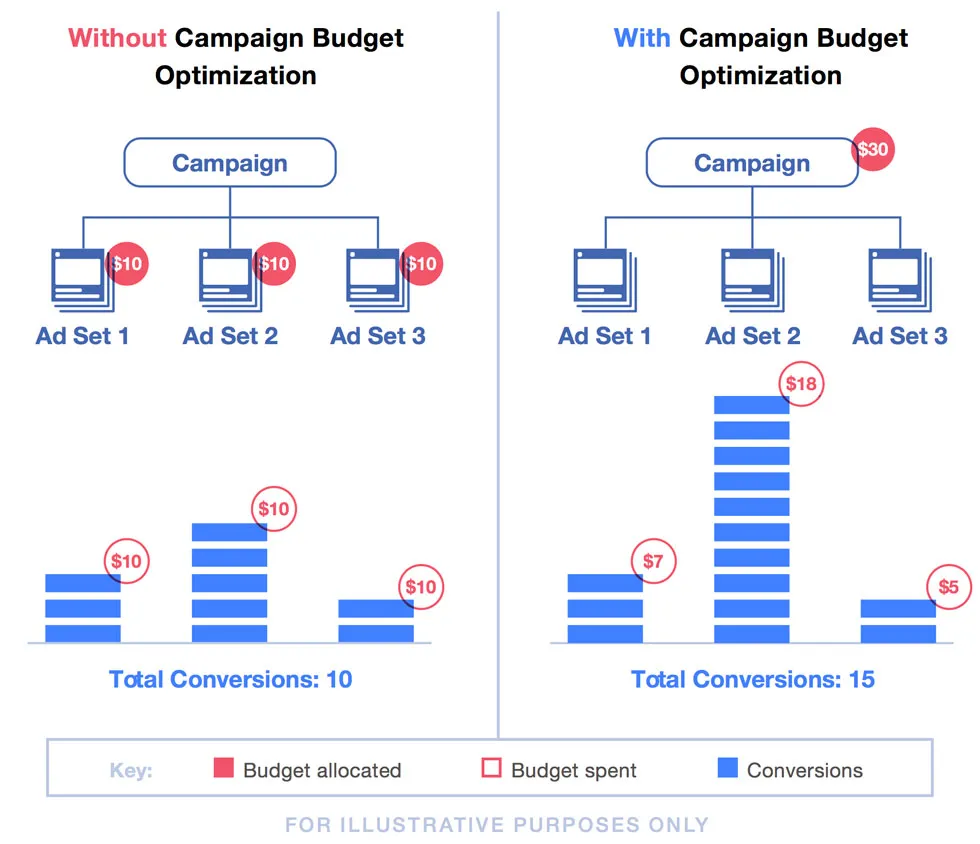
Advantage Campaign Budget In Action
To offer a clearer understanding, let’s examine how Meta Advantage campaign budget allocates your ad spending and the importance of individual optimization for each ad set.
(Note: This example is purely illustrative. All numbers are fictional and do not reflect any real campaigns.)
For example, your brand will launch an Awareness campaign to introduce a new product and gauge market response. You decide to activate three ad sets for the campaign, organized by ad format:
- Image ad set
- Video ad set
- Carousel ad set
With an allocated budget for the campaign at $1,000 for 1 month, you set up a lifetime budget and turn on the Advantage campaign budget option.
With your ads under Facebook’s campaign budget optimization, the system initiates a learning phase for your ads. During this phase, it assesses each ad set’s performance and determines the optimal budget distribution.
For instance, should the Carousel ad sets outperform the others by the second week, Facebook CBO might adjust the budget distribution to:
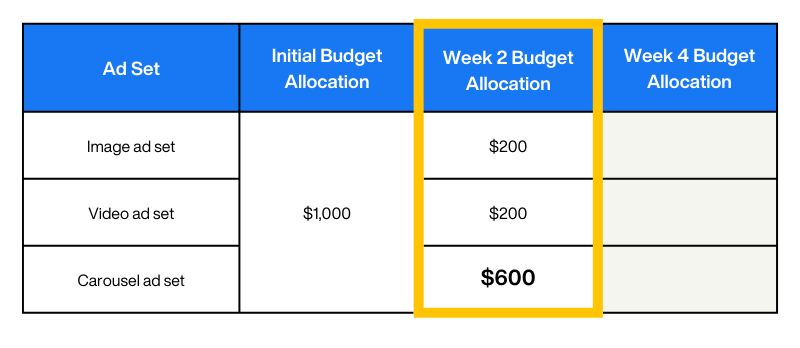
This redistribution reflects CBO’s ability to allocate budgets dynamically based on ongoing performance analysis. However, if the Video ad sets initially underperform, it’s advisable not to deactivate them prematurely. CBO continues to monitor and analyze all ad sets throughout the campaign duration.
For example, if after four weeks, the Video ad sets start performing better, CBO might then adjust the budget to enhance their reach:
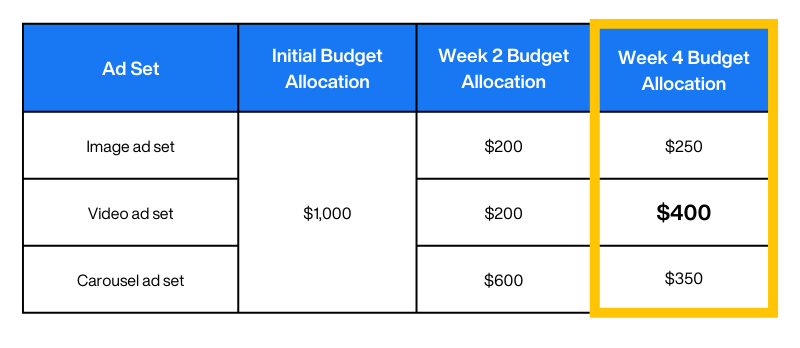
This example underscores the intelligence of Facebook CBO in managing ad spend. It dynamically reallocates budgets based on performance, ensuring no opportunity for optimization is missed, even with ad sets that may take longer to show their full potential.
Make Budget Allocation Effortless with Facebook CBO
Eliminate the worry of needing to constantly monitor your campaigns for fear that ad performance might dip in your absence. The essence of Facebook campaign budget optimization is to lift this burden from advertisers, allowing you to concentrate on broader strategic objectives such as data analysis and campaign performance decisions.
Rather than seeing it as giving up control, consider campaign budget optimization as a sophisticated tool working on your behalf. This approach doesn’t mean you’re stepping back entirely; instead, you remain an integral part of the decision-making process, guiding the AI rather than being sidelined by it.
A committed and expert advertising partner is crucial for the success of any digital campaign. Engage with Strike Social‘s Facebook advertising professionals and experience the difference that expert insight and strategic use of tools can make. Let us show you how Strike Social can be a valuable ally in your advertising strategy.


